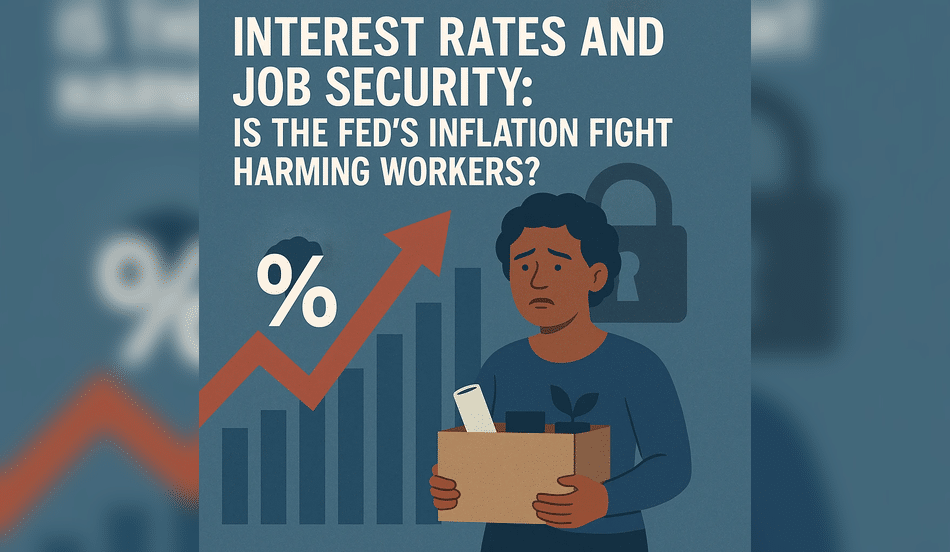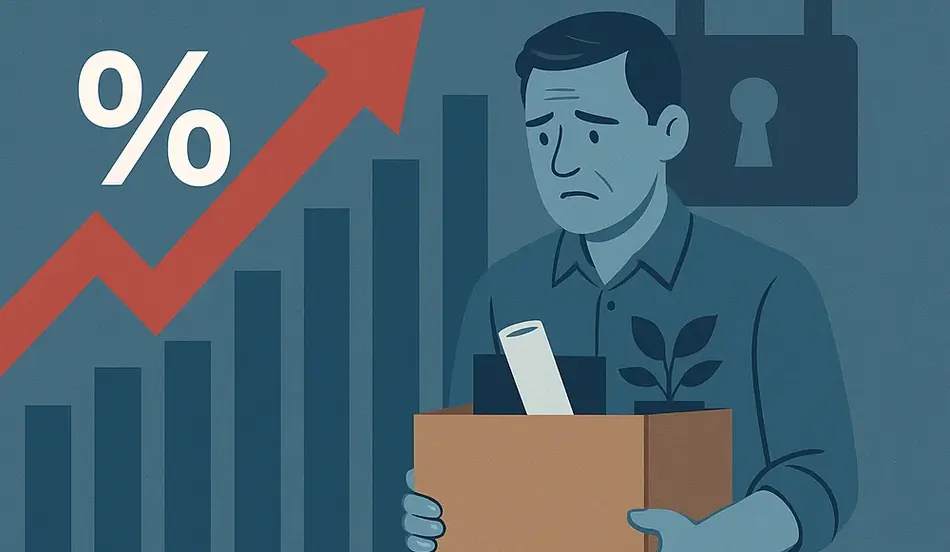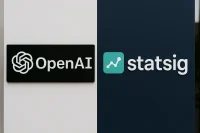As the U.S. Federal Reserve continues its campaign to rein in inflation, American workers are increasingly feeling the pinch not at the gas pump or grocery aisle, but in their job security. Interest rate hikes, traditionally seen as a stabilizing force against inflation, may now be contributing to corporate caution, hiring slowdowns, and layoffs across sensitive sectors. Is the Fed’s inflation-fighting playbook inadvertently shaking the foundation of American employment?
The Fed’s Mandate: Balancing Inflation and Employment
The Federal Reserve has a dual mandate: keep prices stable and promote maximum employment. In response to post-pandemic inflation—reaching highs of over 9% in 2022—the Fed embarked on an aggressive interest rate hike trajectory, raising rates from near-zero to more than 5.25% by late 2023. The goal: cool demand, reduce price pressures, and steer inflation back toward the 2% target.
By 2025, inflation has come down, hovering near 3.2%. Yet, the aftershocks of tight monetary policy continue to reverberate through the labor market.
Interest Rates and Their Employment Ripple Effects
A. Costlier Borrowing for Businesses
Higher interest rates make it more expensive for businesses to borrow money—whether for expansion, payroll, or investment in equipment. For small and medium enterprises (SMEs), which often rely on credit lines or loans, this can mean hiring freezes or deferral of new projects.
In sectors like construction, retail, and manufacturing, anecdotal data shows delayed hiring and paused expansion plans due to financing constraints. Tech startups, heavily reliant on venture capital, have also scaled back hiring amid tighter funding environments.
B. Consumer Spending Dips
As interest rates rise, consumers face higher mortgage payments, credit card bills, and car loan costs. This often results in belt-tightening—reducing demand for goods and services. In turn, businesses anticipate less revenue and respond with more conservative staffing plans.
Retailers, restaurants, and travel-related businesses that had boomed in the post-pandemic period now report uneven growth and limited hiring. Despite strong consumer confidence indicators, spending has become more selective and debt-sensitive.
C. Housing and Real Estate Slumps
Higher mortgage rates—surging from sub-3% in 2021 to over 6.5% in 2025—have cooled the housing market. This downturn has ripple effects on construction jobs, real estate brokers, mortgage officers, and home improvement services. Layoffs in mortgage lending have persisted since 2023, with thousands of roles slashed.
Which Workers Are Most Affected?
A. Interest-Rate-Sensitive Sectors
The industries most vulnerable to Fed rate hikes include:
- Construction: Hiring has slowed as commercial and residential projects are delayed or canceled.
- Manufacturing: Faced with costlier input loans and cautious inventories, manufacturers are hiring cautiously.
- Finance & Real Estate: Mortgage brokerages and banks are shedding roles, particularly in origination and underwriting.
- Tech Startups: With venture capital tightening, tech firms are reducing headcount or instituting hiring freezes.
B. Entry-Level and Hourly Workers
Small businesses—many of which employ younger and hourly workers—are pulling back on new hires. A survey by the National Federation of Independent Business in May 2025 found that only 42% of small business owners plan to hire in the next three months, down from 59% a year ago.
🧭 Job Hunting as an Entry-Level or Hourly Worker?
With small businesses dialing back on new hires—only 42% plan to recruit in the next 3 months—finding stable, hourly work in 2025 is more competitive than ever.
WhatJobs helps you cut through the noise by connecting you to entry-level and hourly roles in retail, hospitality, warehousing, and more—across companies still actively hiring.
Don’t wait for opportunities to come to you. Be proactive and take charge of your job search today.
👉 Explore available hourly and entry-level jobs now.What About the Broader Labor Market?
A. Unemployment Remains Low—But Warnings Loom
Despite sector-specific distress, the national unemployment rate remains relatively low at 4.1% as of June 2025. However, job openings have declined, and average monthly job gains have slowed from over 300,000 in 2022 to under 150,000 this year.
The Federal Reserve’s own research suggests that labor market softening is a “necessary condition” for achieving long-term price stability. Yet some economists argue that this comes at the cost of job security and wage growth for vulnerable populations.
B. Wage Growth is Slowing
As employers scale back, wage growth is cooling. Average hourly earnings rose just 2.9% year-over-year in Q2 2025—below inflation, and significantly down from 5–6% peaks seen in 2022. This effectively erodes workers’ real income, even as the labor market appears stable on paper.
The Fed’s Delicate Dance: Too Hot or Too Cold?
Critics argue that the Fed may be overcorrecting. While inflation needed taming, aggressive interest rate hikes could now be chilling growth too sharply. The challenge lies in finding the “Goldilocks zone”—where inflation is under control without crushing employment.
Former Fed officials have warned that the labor market’s strength may mask underlying fragility. If job creation continues to decelerate into late 2025, layoffs could broaden, and consumer confidence could falter—risking a recessionary spiral.

Regional and Demographic Disparities
A. Blue-Collar vs. White-Collar Impact
So far, blue-collar jobs in logistics, warehousing, and healthcare support have shown resilience. But white-collar roles—particularly in marketing, HR, and tech—are seeing more layoffs and fewer job openings. Corporate hiring across the board has slowed, with increased scrutiny on productivity and ROI per role.
B. Regional Sensitivity
States dependent on housing or tourism—like Florida, Arizona, and Nevada—have seen sharper job losses in construction and hospitality. Conversely, states with diversified economies (e.g., Texas, Massachusetts) are faring better.
Long-Term Implications
A. Risk of Labor Market Entrenchment
Sustained hiring slowdowns can lead to “scarring”—a long-term reduction in workforce participation, particularly among older workers or new grads. Already, Gen Z unemployment stands at 6.3%—above the national average.
If the Fed’s policies push more firms into conservatism, future hiring waves may be delayed, potentially undermining economic mobility and workforce resilience.
B. Automation as a Hedge
Many companies are turning to automation as a response to hiring hesitancy. High interest rates reduce the incentive to hire but increase interest in capital investment—particularly if ROI can be demonstrated through AI, robotics, or digital transformation.
This shift could further displace routine jobs and widen the skills gap if worker training doesn’t keep pace.
Can the Fed Pivot?
Some economists believe that if inflation continues to decline through late 2025, the Fed could pause or reverse rate hikes. However, Chair Jerome Powell has emphasized caution—prioritizing long-term inflation control even at the cost of “transitional labor market pain.”
Market analysts expect rate stabilization by early 2026, but only if inflation remains below 3%. Until then, caution is the Fed’s watchword—and that means continued pressure on businesses and workers alike.
What Can Workers Do?
Upskill and Reskill
Job seekers should invest in digital, analytical, and communication skills. Certificates in project management, data literacy, and AI applications are increasingly sought after—even in non-tech roles.
Stay Mobile
Workers in softening industries may need to pivot geographically or sector-wise. Health care, green energy, and skilled trades continue to show robust demand.
Monitor Job Quality
Even if layoffs are minimal, job quality may erode through stagnating wages, reduced hours, or fewer benefits. Workers should negotiate strategically and focus on employers with strong reputations for workforce support.
FAQs
Q: Are interest rate hikes causing layoffs?
A: Not directly, but higher rates are discouraging borrowing and investment, which slows hiring and leads to selective job cuts in vulnerable sectors.
Q: What industries are most affected?
A: Real estate, tech startups, construction, and manufacturing are among the most rate-sensitive sectors seeing hiring freezes or job losses.
Q: Is the Fed trying to cause unemployment?
A: No, but it acknowledges that a cooler labor market is a side effect of its inflation strategy. The goal is a soft landing—not a recession.
Q: Will interest rates go down soon?
A: Possibly by 2026, if inflation stays under control. But the Fed remains cautious, and any reversal will likely be slow and data-dependent.
Final Take
The Federal Reserve’s battle against inflation may be yielding results, but it’s also creating subtle tremors in the American labor market. While the unemployment rate remains low on the surface, cracks are appearing—particularly in interest-sensitive industries and among younger, entry-level workers.
As employers delay hiring and workers face stagnant wages, the question is not whether inflation is falling—but at what cost. For policymakers, balancing economic stability with workforce security will define the post-pandemic recovery. For workers and businesses alike, adaptability is no longer optional—it’s essential.




